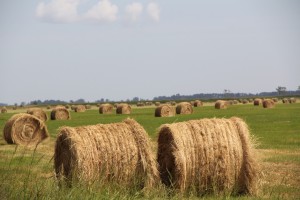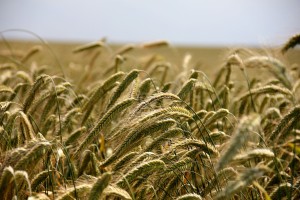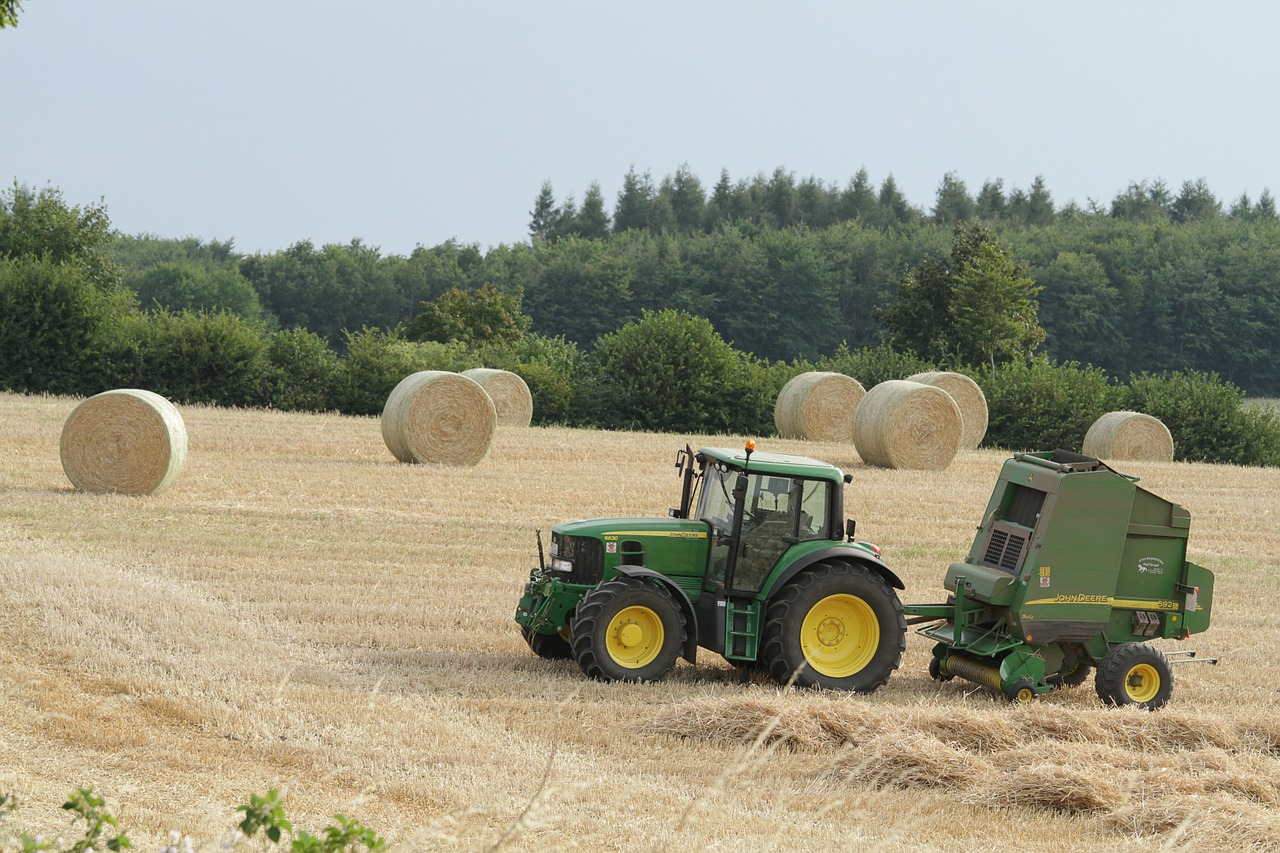Haying season is in full swing. We’ve had some seasonal rain that made our pasture grasses thrive, so we’ve been having a pretty busy month. Here, we will talk about the importance of moisture levels and cutting height of bailing hay.
With heavy rain and flooding, some producers around the country may be facing difficulties with hay cutting and baling. If you haven’t made your first harvesting of alfalfa grasses yet, you might want to walk around your stand and evaluate the cutting height.
Alfalfa cutting height
 Bruce Anderson, Nebraska Extension Forage Specialist believes that you might be surprised to find your grasses already growing into your next cutting. “Walk into your alfalfa field before cutting and look closely at the base or crown of the plants. Do you see short, new shoots starting to grow? If so, these new shoots are the new plants that your alfalfa hopes to turn into your second cutting.” – says Anderson. “Are many of them a couple inches taller than your usual cutting height? If you cut these new shoots off – along with the first growth – your alfalfa plants will have to start a whole new set of shoots for regrowth. This could cause a delay in second cutting regrowth by as much as one week.” He added.
Bruce Anderson, Nebraska Extension Forage Specialist believes that you might be surprised to find your grasses already growing into your next cutting. “Walk into your alfalfa field before cutting and look closely at the base or crown of the plants. Do you see short, new shoots starting to grow? If so, these new shoots are the new plants that your alfalfa hopes to turn into your second cutting.” – says Anderson. “Are many of them a couple inches taller than your usual cutting height? If you cut these new shoots off – along with the first growth – your alfalfa plants will have to start a whole new set of shoots for regrowth. This could cause a delay in second cutting regrowth by as much as one week.” He added.
Fortunately, you could avoid the delay for your second cutting by raising your cutting height by just a couple of inches, so that you don’t end up cutting off the second growth shoots. This would give them a head start for the second cutting.
Normally you would cut alfalfa as short as possible, but when harvest is delayed, you need to look for new shoots first and then raise cutting height if needed.
Moisture level and hay quality
Moisture levels have a direct correlation to hay quality. According to Daniel Lima, OSU Extension Educator, Belmont County, ideally there should be no more than 20% moisture. To be more specific:
- Small squares to be 20% or less,
- Large round, 18% or less and
- Large squares, 16%
 Lima says, “Hay baled at 20% moisture or higher has a high probability of developing mold, which will decrease the quality of hay by decreasing both protein and total nonstructural carbohydrates (TNC), aka energy. The mold will also make the hay less palatable to livestock and could potentially be toxic, especially for horses. Even hay baled between 15%-20% moisture will experience what is known as ‘sweating.’ Sweating, in regard to hay bales, refers to microbial respiration, which will create heat and result in dry matter (DM) loss. A good rule of thumb is that you should expect a 1% DM loss per 1% decrease of moisture after bailing. As an example, hay baled at 20% moisture that is stored and dried down to 12%; will result in 8% DM loss.”
Lima says, “Hay baled at 20% moisture or higher has a high probability of developing mold, which will decrease the quality of hay by decreasing both protein and total nonstructural carbohydrates (TNC), aka energy. The mold will also make the hay less palatable to livestock and could potentially be toxic, especially for horses. Even hay baled between 15%-20% moisture will experience what is known as ‘sweating.’ Sweating, in regard to hay bales, refers to microbial respiration, which will create heat and result in dry matter (DM) loss. A good rule of thumb is that you should expect a 1% DM loss per 1% decrease of moisture after bailing. As an example, hay baled at 20% moisture that is stored and dried down to 12%; will result in 8% DM loss.”
P.S: – To ensure adequate sustainable nutrition for your livestock this year, you could grow your own micro-green grasses that are high in nutrition value and easy to digest. Click here to learn about DIY plans for livestock feeding systems. To get a hold of us, please call at 303-495-3705 or Click here to book a meeting. You can also get your Feed in A Box Microgreens (fodder) from us, you will absolutely love it!!
Please leave your questions or comments in the comment box below or visit our Facebook Page we’d really appreciate it.
Source: Sustainable Livestock Nutrition
Related articles and resources:
- Hay Talk Part 1: Why cutting height and moisture levels matter | BEEF Daily
- Photo Gallery: 9 new hay-making tools for the 2015 forage season | BEEF Magazine
- Make Hay While Sun Shines – Hay Silage & Animal Feed | Sustainable Livestock Nutrition
- Raise Cutting Height When First Harvest Is Delayed | Announce | University of Nebraska-Lincoln
- Daniel Lima, OSU Extension Educator, Belmont county



